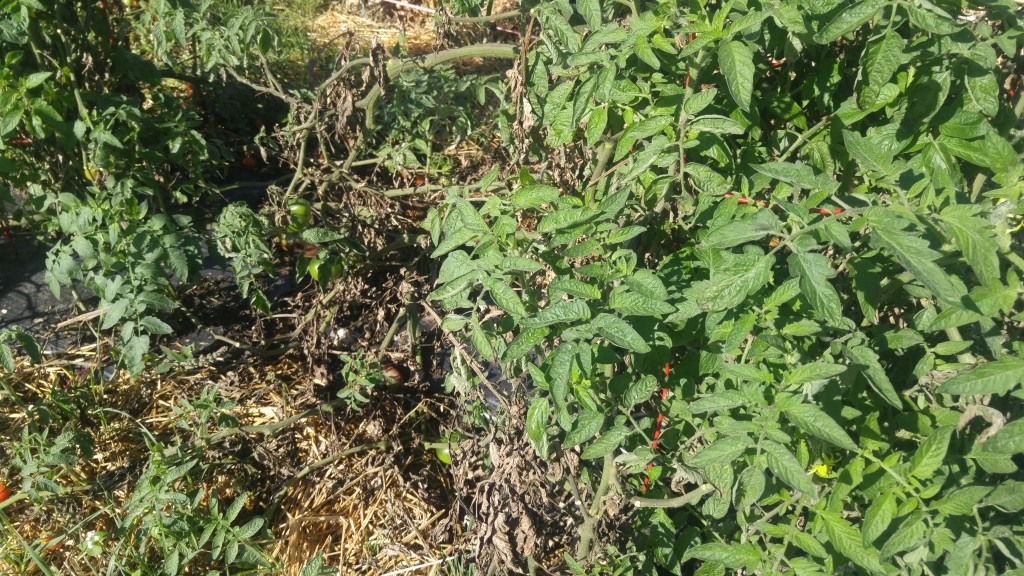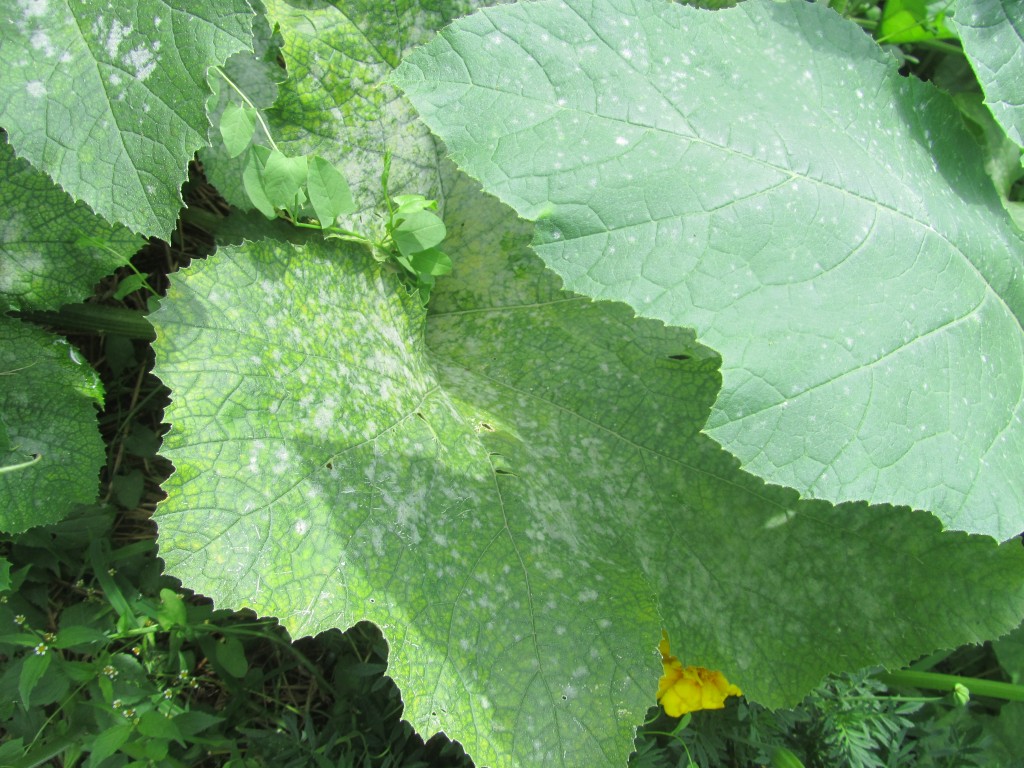Earlier in this past growing season I took an informal survey of how a number of tomato varieties were responding to leaf spot diseases. You can go back and read the post to find out how things were going for them at that time.
I kept an eye on them through the season and watched their progress. In one garden I applied a couple of sprays of an organic fungicide, that didn’t seem to make much difference; it may have helped if I kept it up. As expected, on all of the plants, sprayed or not, the leaf spot symptoms got progressively worse as the fruit on the plants began to grow and develop. It takes a lot of plant energy to produce a crop of tomatoes.
A curious thing happened on one variety at the end of the season. The heirloom variety, Granny Cantrell, began to shake off the fungal infection. While the other tomato plants lost pretty much all of their leaves and most of them actually died back, the Granny Cantrell plants shed their infected leaves and grew very healthy looking replacement leaves. That was something I’ve never seen in a tomato plant. Sure, many varieties struggle to send out more leaves but they never seem to amount to much. Not only were they growing leaves but they were also ripening existing fruit and producing new tomatoes to boot! Our growing season is too short for the plants to continue to grow so I’ll never know if the new shoots would have continued to grow without leaf spot symptoms. It may be a useful trait that tomato breeders could use to develop a new variety.

Notice the new green foliage on the Granny Cantrell plant on the right compared to the defoliated tomato on the left.
Juliet was another noteworthy tomato. They had good resistance to the diseases throughout the growing season and produced a huge crop of tomatoes, far out pacing any variety I grew this year.
All of the tomatoes I grew were tasty, how could they not be? since they were vine-ripened and eaten right after picking. All the people who tasted the tomatoes; and there were quite a few, agreed that Cherokee Purple was their hands down favorite. Cherokee Purple however, had little disease resistance and didn’t produce very many tomatoes at all. They also have very thin skin making the very hard to handle without damaging them. They are not a typical red tomato so their coloring made it harder to distinguish when they were ripe. Also their flesh inside has a distinctive purple hue that, along with their taste makes the quite memorable.
Bob


